Renting a Car in Grand Cayman
Information about renting a car in Grand Cayman, Cayman Islands
Car rentals in Grand Cayman provide an excellent way to explore the island's beauty and attractions at your own pace. Here is some information about car rentals in Grand Cayman:
Our personal favorite rental car companies in Grand Cayman are Budget Rent a Car and Apex Car Rentals. Budget has great prices and newer vehicles. Apex has discounted priced with vehicles just a few years older. Both are great options and are leading and reputable brands in the Grand Cayman.
Information about Budget Rent a Car in Grand Cayman at the Owen Roberts International Airport:
Visit www.budgetcayman.com for direct access and further information regarding Apex Car Rentals in Grand Cayman
Budget Rent a Car is a popular car rental company that operates in Grand Cayman, including at the Owen Roberts International Airport. Budget offers a range of vehicles to suit various needs and budgets. Here's some information about Budget Rent a Car at the Grand Cayman airport:
Location: Budget's rental counter is located at the Owen Roberts International Airport in Grand Cayman. After arriving at the airport, you can proceed to the car rental area to find the Budget counter.
Reservation: It's recommended to make a reservation in advance to ensure availability and secure your desired vehicle. You can make a reservation online through the Budget website or by contacting their customer service.
Vehicle Options: Budget offers a variety of vehicles, including economy cars, sedans, SUVs, minivans, and even luxury vehicles. You can choose the vehicle type that suits your needs and preferences.
Requirements: To rent a car from Budget in Grand Cayman, you typically need to be at least 21 years old, possess a valid driver's license (either from your home country or an International Driving Permit), and have a major credit card for payment and deposit purposes. Specific requirements may vary, so it's recommended to check the terms and conditions when making your reservation.
Insurance Coverage: Budget offers various insurance options to provide coverage during your rental period. This can include options like Collision Damage Waiver (CDW), liability insurance, and personal accident insurance. It's important to carefully review the coverage options and associated costs to ensure you have the desired level of protection.
Additional Services: Budget may offer additional services such as GPS navigation devices, child car seats, and additional drivers for an extra fee. These options can be selected during the reservation process or requested at the rental counter.
Return Process: When returning your rental car to Budget at the Grand Cayman airport, follow the signs to the designated car rental return area. Budget staff will inspect the vehicle and process the return. It's important to return the car with a full tank of fuel to avoid additional charges.
It's always recommended to review the terms and conditions specific to Budget Rent a Car in Grand Cayman for the most accurate and up-to-date information regarding their services, policies, and any additional charges or requirements.

Information about Apex Car Rentals in Grand Cayman at the Owen Roberts International Airport:
Visit www.apexcayman.com for direct access and further information regarding Apex Car Rentals in Grand Cayman
Apex Car Rentals is a car rental company that operates in Grand Cayman at the Owen Roberts International Airport.
Vehicle Selection: Apex Car Rentals typically offers a range of vehicles to suit different needs and preferences. This can include economy cars, compact cars, sedans, SUVs, and sometimes even luxury or specialty vehicles. The specific availability of vehicle types may vary depending on the location and time of your rental.
Reservation Process: To rent a car from Apex in Grand Cayman, you can typically make a reservation through their official website or by contacting their customer service. During the reservation process, you will need to provide your desired rental dates, location, and any other requested information.
Requirements: The specific requirements to rent a car from Apex can vary, but generally, you will need to meet the minimum age requirement (usually 21 years or older), possess a valid driver's license, and have a valid credit card for payment and deposit purposes. Additional requirements may apply, so it's advisable to review the terms and conditions or contact Apex directly for the most accurate information.
Insurance Coverage: Apex Car Rentals typically offers insurance options to provide coverage during your rental period. These options may include Collision Damage Waiver (CDW), liability insurance, and personal accident insurance. It's important to review the coverage options, associated costs, and any deductible or exclusions to ensure you have the desired level of protection.
Additional Services: Depending on the location and availability, Apex may offer additional services such as GPS navigation systems, child car seats, and additional drivers for an extra fee. These services can usually be selected during the reservation process or requested at the rental counter.
Return Process: When returning your rental car to Apex in Grand Cayman, you would typically follow the instructions provided by the company. This may include returning the car to their designated location, completing a return checklist, and handing over the keys to a representative. It's important to return the car in the same condition as when you received it to avoid any additional charges.
To get the most accurate and up-to-date information about Apex Car Rentals in Grand Cayman, I recommend visiting their official website or contacting their customer service directly. They will be able to provide you with specific details about their location, available vehicles, rental policies, and any other information you may need for your car rental in Grand Cayman.

General Information about rental car agencies in Grand Cayman:
Rental Companies: Several international and local car rental companies operate in Grand Cayman, offering a wide range of vehicles to suit different preferences and budgets. Some popular rental companies include Budget, Apex, Avis, Thrifty, and Hertz.
Booking: It's recommended to book your car rental in advance, especially during peak tourist seasons. You can make reservations online through the rental company's website or through various travel booking platforms.
Driver's License: To rent a car in Grand Cayman, you need a valid driver's license from your home country or an International Driving Permit (IDP). The minimum age to rent a car is usually 21, but some companies may require drivers to be at least 25 years old.
Traffic Rules: In Grand Cayman, you drive on the left side of the road, similar to the United Kingdom. Take note of the speed limits, which are typically 40 mph (64 km/h) in urban areas and 50 mph (80 km/h) on highways.
Insurance: Most rental companies provide basic insurance coverage, but it's advisable to check the details and consider additional coverage options for peace of mind. Some credit cards also offer rental car insurance, so it's worth exploring that option.
Road Conditions: The main roads in Grand Cayman are generally well-maintained and in good condition. However, some less-developed areas or off-road locations may have rougher terrain. Keep in mind that some roads may flood during heavy rains, so exercise caution during inclement weather.
Fuel Stations: Gas stations are readily available throughout the island, particularly in populated areas like George Town and along the main road networks. Remember to familiarize yourself with the fuel type your rental car requires (gasoline or diesel).
Parking: Parking spaces can be limited, particularly in busier areas. However, many hotels, resorts, and tourist sites offer parking facilities. Be mindful of any parking regulations and avoid parking in no-parking zones or obstructing traffic.
Exploring the Island: With a rental car, you can easily explore the stunning attractions of Grand Cayman, such as Seven Mile Beach, Rum Point, Stingray City, Pedro St. James National Historic Site, and the Mastic Reserve. Having a vehicle allows you the flexibility to create your own itinerary and discover the island's hidden gems.
Public Transportation: While public buses operate in Grand Cayman, they may not be as frequent or as convenient for exploring the island compared to having a rental car. Taxis are available as well, but they can be expensive for longer journeys.
Remember to drive responsibly, respect local traffic laws, and enjoy the natural beauty of Grand Cayman during your car rental adventure!
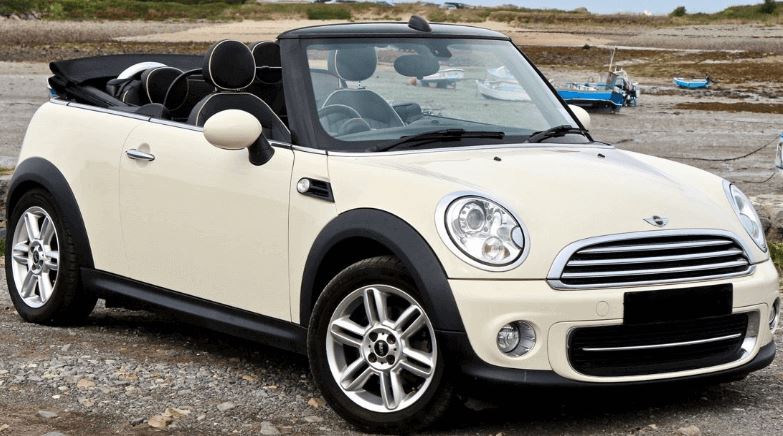
All About Rental Car Coverage or Rent a Car Insurance in the Cayman Islands:
Most reputable car rental companies in the Cayman Islands offer their own protection at a nominal daily fee. When renting with a reputable company, we believe accepting the coverage that the car rental agency offers is the best option. In the event of incent or accident, you as the renter can walk away with no or limited liability as long as you follow the car rental agreement. With almost 45 years of repuation in Grand Cayman, you know that you are in good hands with both Budget Rent a Car and Apex Car Rentals.
Larger rental car companies offer two types of coverage. One is called CDW or LDW. This is a Collision Damage Waiver or Loss Damage waiver which protects the rental car. Most companies offer full protection, but some may offer this protection with a deductible. Another popular coverage in the Cayman Islands is called TPLW or Third-Party Liability Waiver. This coverage may vary depending on the rental car company. However, this waiver takes care of the deductible for damages to a third party. All rental car companies are required by law to carry liability protection coverage. At present, we are not aware of any companies offering SLI or Supplemental Liability Insurance.
Many visitors are under the impression that their insurance company from back home will cover damage to the rental car. This is almost always not the case. Cayman Islands is not part of the United States for example and most car rental car companies will not assume liability outside the USA.
Also, many renters also assume that their credit card will offer insurance. This is not always the case. Many credit card companies have restrictions with regards to how many days per year you can rent, the type of vehicle rented, consecutive rentals and several other restrictions. It is impossible for your rental car agency to know if you have coverage. This will be the renter’s responsibility to ensure with their credit card company that they do indeed have coverage. Another matter to consider is that the credit card company will never cover for liability. Finally, it should be noted that the rental contract is between the renter and the rental car company. In the event of incident or accident the rental car company may charge you directly as per their contract. Then it will be up to the renter to work with their credit card company directly to seek reimbursement. Most car rental agencies will work with the renter under such circumstances; however, this should be considered.
In recent years, more tour operators and travel web sites are offering rental cover coverage at the time of the booking. Like the above, it needs to be considered that the rental agreement is between the renter and the rental agency. Although most reputable car rental agencies will work to assist during the process, the responsibility is ultimately on the renter as per the contract.
The above should all be taken into consideration. Based on our experience and discussions with renters, we feel the best option is to take coverage options offered at the rental counter by the rental car company. Then you can enjoy your trip with peace of mind and no worries in the event of a fender bender.
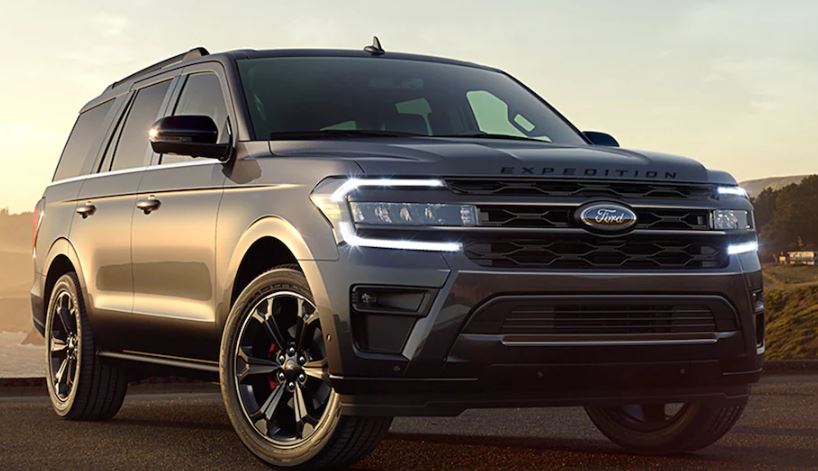
What Tourists May Need to Know about Driving in The Cayman Islands:
If you're a tourist planning to drive in the Cayman Islands, here are some important things to know:
Driving Orientation: In the Cayman Islands, as a British Overseas Territory, driving is on the left-hand side of the road. If you're accustomed to driving on the right side, take extra care and stay aware of your positioning on the road.
Driver's License: To drive in the Cayman Islands, you'll need a valid driver's license from your home country or an International Driving Permit. Make sure to carry your license with you while driving.
Age Restrictions: The minimum age for driving in the Cayman Islands is typically 18 years old. However, rental car companies may have their own age restrictions, and some may require drivers to be at least 21 years old or even 25 years old. Check with the rental company for their specific age requirements.
Seat Belt Usage: Seat belts are mandatory for both the driver and all passengers. Ensure that everyone in the vehicle is properly restrained with seat belts at all times.
Mobile Phone Usage: It is illegal to use a handheld mobile device while driving in the Cayman Islands. If you need to make a call, use a hands-free system or pull over to a safe location.
Speed Limits: The speed limits in the Cayman Islands are typically posted in miles per hour (mph). The standard speed limit on most roads is 25 mph (40 km/h), although it can vary in certain areas. Pay attention to the posted speed limit signs and adjust your speed accordingly.
Roundabouts: Roundabouts are common in the Cayman Islands. Familiarize yourself with how they work and the appropriate yielding procedures. Remember to give way to traffic already in the roundabout, signal your intentions, and select the correct lane based on your desired exit.
Drinking and Driving: The legal blood alcohol concentration (BAC) limit for driving in the Cayman Islands is 0.08%. However, it is advisable to avoid drinking and driving altogether for safety reasons.
Parking: Observe and comply with parking regulations and signage. Avoid parking in areas designated as no parking zones or where parking is prohibited.
Road Conditions and Wildlife: Be aware that some roads in the Cayman Islands may have narrow or winding sections. Drive with caution and adapt your speed to the conditions. Additionally, be cautious of wildlife, such as iguanas or chickens, crossing the road in certain areas.
Local Driving Etiquette: The Cayman Islands have a relatively calm and courteous driving culture. Be patient, follow the rules of the road, and be considerate to other drivers and pedestrians.
It's important to note that road conditions, regulations, and local driving customs may change over time. For the most accurate and up-to-date information, consult official sources, such as the Cayman Islands Department of Vehicle and Drivers' Licensing, and exercise caution while driving.
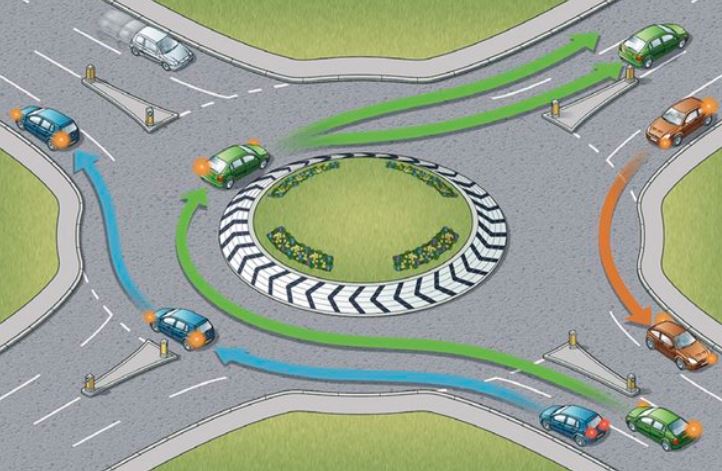
In the Cayman Islands They Drive on The Left Hand Side of the Road:
Driving on the left-hand side of the road in Grand Cayman can be a significant adjustment for tourists who are accustomed to driving on the right. Here's what you need to know:
Vehicle Positioning: As a general rule, remember to keep to the left side of the road. This means that the driver's seat will be on the right side of the car, and you'll drive on the right side of the vehicle.
Roundabouts: Roundabouts are common in Grand Cayman. When approaching a roundabout, keep to the left and drive around it in a counterclockwise direction. Yield to vehicles already in the roundabout and signal your intended exit.
Lane Discipline: Stay in the left lane while driving on multi-lane roads, except when overtaking or turning right. Overtake on the right-hand side and return to the left lane once you've completed the maneuver.
Intersections and Turns: When making turns, remember that left turns will involve crossing oncoming traffic, while right turns will be simpler. Pay attention to traffic signals, road signs, and the flow of vehicles to make safe and proper turns.
Pedestrian Crossings: Be extra cautious at pedestrian crossings and yield to pedestrians. Look for zebra crossings or designated crosswalks where pedestrians have the right-of-way.
Mirrors and Blind Spots: Adjust your mirrors to account for the reversed positioning in the car. Your left side mirror will now be more critical for checking blind spots on your right side.
Road Signs and Signals: Pay close attention to road signs, traffic lights, and signals. Follow their instructions accordingly, keeping in mind the reversed perspective for turning and lane positioning.
Take Your Time: It's normal to feel a bit disoriented initially when driving on the left. Take your time, drive at a comfortable pace, and remain focused on the road.
Practice and Familiarize: Before venturing into heavy traffic areas or unfamiliar roads, spend some time practicing driving on the left in less congested areas to become more comfortable with the new driving orientation.
Rental Car Orientation: Take a few minutes to familiarize yourself with the rental car's controls and positioning, as they may be different from what you're used to.
Remember that adjusting to driving on the left requires heightened concentration and awareness, particularly when changing lanes, turning, or approaching intersections. Stay calm, follow the traffic rules, and be patient as you adapt to the new driving environment.
If you're uncertain or nervous about driving on the left, consider taking a refresher course or hiring a local driver for your initial journeys to help you acclimate to the left-side driving in Grand Cayman.

Gas Stations in Grand Cayman and information for people with rental cars:
Grand Cayman has several gas stations where you can refuel your rental car. Here is some general information about gas stations in Grand Cayman:
Gas Station Availability: Gas stations are readily available throughout the island of Grand Cayman, particularly in populated areas and near major roadways. You can find gas stations in George Town (the capital), along Seven Mile Beach, and in other towns and villages across the island.
Gasoline Types: Gas stations in Grand Cayman typically offer both regular unleaded gasoline (often referred to as "regular" or "super") and diesel fuel. The majority of rental cars in Grand Cayman use regular unleaded gasoline.
Payment Methods: Most gas stations in Grand Cayman accept major credit cards, such as Visa, MasterCard, and American Express. Some gas stations may also accept cash, but it's always a good idea to have a credit card handy for convenience.
Self-Service Stations: Gas stations in Grand Cayman are typically self-service, where you'll pump the fuel yourself. Attendants may be available to assist with fueling or provide additional services, but it's generally self-service.
Hours of Operation: Gas stations in Grand Cayman generally have varying operating hours. Some stations are open 24 hours a day, while others may have more limited hours, particularly in smaller towns or rural areas. It's advisable to plan your refueling accordingly, especially if you're traveling during late hours or in more remote parts of the island.
Gas Station Brands: Grand Cayman is home to various gas station brands, including Esso, Texaco, and Rubis, among others. These stations offer similar services and fuel options, so you can choose the one that is most convenient for you based on your location and preferences.
To ensure a smooth experience, it's recommended to keep track of your fuel levels and plan your refueling stops accordingly. This is especially important if you're planning to explore more remote areas of the island where gas stations might be less frequent. Additionally, familiarize yourself with the local traffic regulations, as driving is on the left-hand side of the road in the Cayman Islands.
Please note that it's always a good practice to return your rental car with a full tank of fuel, as most rental companies require the car to be returned in the same condition as when it was rented.

Road signage in Grand Cayman and information for tourists renting cars:
When driving a rental car in Grand Cayman as a tourist, it's important to familiarize yourself with the road signs to navigate the island safely. Here are some common road signs you may encounter:
Speed Limit Signs: Speed limits are posted in miles per hour (mph) on Grand Cayman. The standard speed limit on most roads is 25 mph, but it can vary depending on the area and road conditions. Pay attention to the posted speed limit signs and adjust your speed accordingly.
Stop Signs: Stop signs are octagonal and indicate that you must come to a complete stop at the marked intersection. Yield the right-of-way to any vehicles or pedestrians before proceeding.
Give Way Signs: Give way signs are triangular and indicate that you should yield the right-of-way to vehicles approaching from the right at intersections or roundabouts.
One-Way Signs: One-way signs indicate that the road is only for traffic traveling in a specific direction. Pay attention to these signs to ensure you're driving in the correct lane and direction.
No Entry Signs: No entry signs are typically placed at the entrance of roads where entry is prohibited. Pay attention to these signs to avoid driving into restricted areas or one-way streets.
No Parking Signs: No parking signs indicate areas where parking is not allowed. These signs are usually accompanied by additional information or time restrictions. It's important to respect these signs to avoid fines or towing.
Pedestrian Crosswalk Signs: Pedestrian crosswalk signs indicate areas where pedestrians have the right-of-way. Be vigilant and yield to pedestrians at designated crosswalks.
Roundabout Signs: Roundabouts are common in Grand Cayman. Signs will indicate the approach and exit lanes for each road leading to the roundabout. Follow the signs and yield to traffic already in the roundabout.
Warning Signs: Warning signs alert drivers to potential hazards ahead. These signs may include curves, steep grades, pedestrian crossings, wildlife crossings, and other important information. Pay attention to these signs and adjust your driving accordingly.
Directional Signs: Directional signs provide guidance to various locations, such as towns, attractions, beaches, and other points of interest. Follow these signs to navigate to your desired destinations.
It's important to remain alert and attentive while driving, paying attention to both road signs and local traffic regulations. Additionally, familiarize yourself with local driving customs and practices to ensure a safe and enjoyable experience on the roads of Grand Cayman.
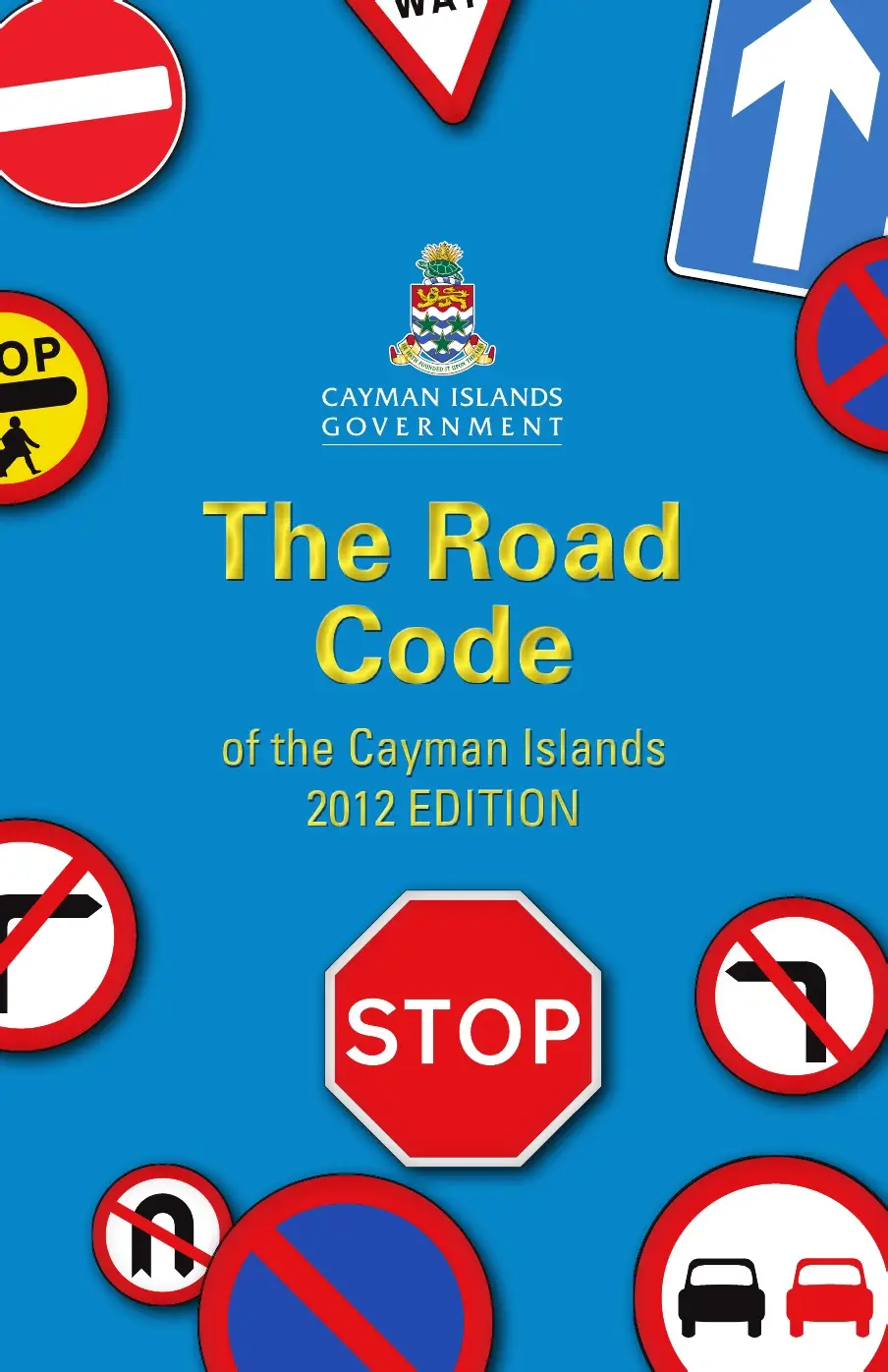
Rounds abouts and information for for toursists in rental cars:
Roundabouts are commonly used in Grand Cayman as a way to manage traffic flow and intersections. If you're a tourist driving a rental car in Grand Cayman, it's essential to understand how to navigate roundabouts. Here are some tips:
Yield to Traffic: When approaching a roundabout, always yield to the traffic already in the roundabout. Vehicles in the roundabout have the right-of-way, and you must wait for a safe gap before entering.
Look for Directional Signs: Pay attention to directional signs that indicate the appropriate lanes for the direction you want to go. These signs will guide you to the correct lane to enter and exit the roundabout.
Choose the Correct Lane: As you approach the roundabout, observe the lane markings and signs. Typically, the left lane is for making left turns or going straight, while the right lane is for making right turns or going straight. Choose the appropriate lane based on your intended direction.
Reduce Speed and Signal: Reduce your speed as you approach the roundabout and signal your intention to other drivers. Use your vehicle's turn signals to indicate your exit or direction. Signal right if you're taking the first exit, and signal left if you're taking any other exit.
Give Way to Pedestrians: Be aware of pedestrians who may be crossing at the roundabout. Yield to pedestrians in the designated crosswalks and wait for them to clear the area before entering the roundabout.
Enter the Roundabout: When it's safe to do so, enter the roundabout and keep to your lane. Stay alert and watch for other vehicles as you navigate the roundabout.
Stay in Your Lane: Once inside the roundabout, maintain your lane and continue driving in a counterclockwise direction until you reach your desired exit.
Exit the Roundabout: As you approach your desired exit, use your turn signal to indicate your intention to exit. Yield to any traffic already in the exit lane and carefully exit the roundabout.
Be Courteous and Patient: Roundabouts can be busy, especially during peak traffic times. Practice patience, be courteous to other drivers, and avoid sudden lane changes or aggressive maneuvers.
It's important to note that roundabouts in Grand Cayman follow the British-style of driving, meaning traffic moves in a clockwise direction. Take your time to familiarize yourself with the roundabouts before driving, and if you're unsure, observe how local drivers navigate them.
By understanding and following these guidelines, you can confidently navigate roundabouts in Grand Cayman while driving a rental car.
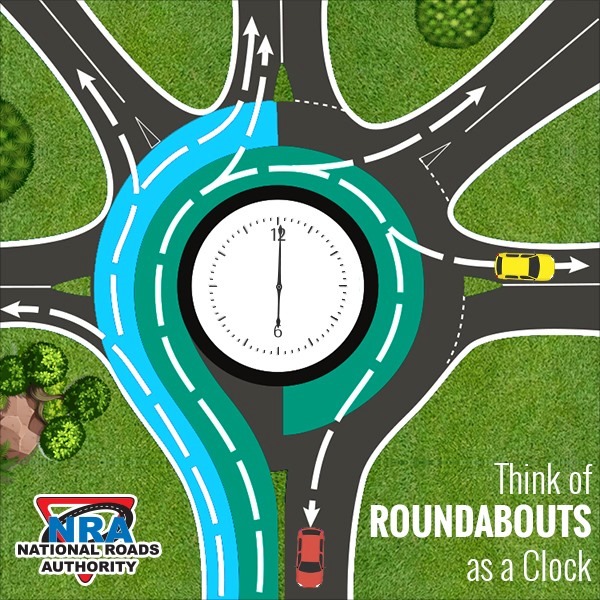
Speed Limit Information that will be of interest to Tourists in Rental Cars in Grand Cayman:
Tourists driving rental cars in Grand Cayman should be aware of the speed limits to ensure a safe and compliant driving experience. Here are some important speed limit regulations to keep in mind:
General Speed Limits: The standard speed limit on most roads in Grand Cayman is 25 miles per hour (mph), which is equivalent to approximately 40 kilometers per hour (km/h). This limit is applicable in residential areas, local streets, and some main roads.
School Zones: In areas designated as school zones, the speed limit is typically reduced to 15 mph (24 km/h) during specific hours when students are arriving at or leaving school. Look for signs indicating school zones and adhere to the posted speed limits and time restrictions.
Highway Speed Limits: On certain major roads and highways, the speed limit may be higher than 25 mph. For example, the Esterley Tibbetts Highway (West Bay Road) and the Linford Pierson Highway have a speed limit of 40 mph (64 km/h) in some sections. Pay attention to posted signs along these roads to determine the applicable speed limits.
Construction Zones: When passing through construction zones, it's common for speed limits to be reduced for safety purposes. Look for construction signs and obey the posted speed limits in these areas.
Variable Speed Limit Zones: In some areas, especially near schools or heavily trafficked areas, variable speed limits may be implemented during certain times of the day or in response to specific conditions. Pay attention to electronic signs that display the current speed limit, as they may change based on the circumstances.
Speed Cameras: Grand Cayman utilizes speed cameras in certain locations to enforce speed limits. These cameras capture images of vehicles exceeding the speed limit, and fines may be issued accordingly. Be mindful of speed limit signs and drive within the legal speed limits to avoid penalties.
It's crucial to always drive at a safe and reasonable speed, taking into account road conditions, traffic, and pedestrian activity. Be aware that the roads in Grand Cayman can be narrow and winding in some areas, so it's important to exercise caution and adjust your speed accordingly.
Please note that speed limits and regulations are subject to change, so it's advisable to stay updated with any local driving regulations and be observant of posted signs while driving in Grand Cayman.
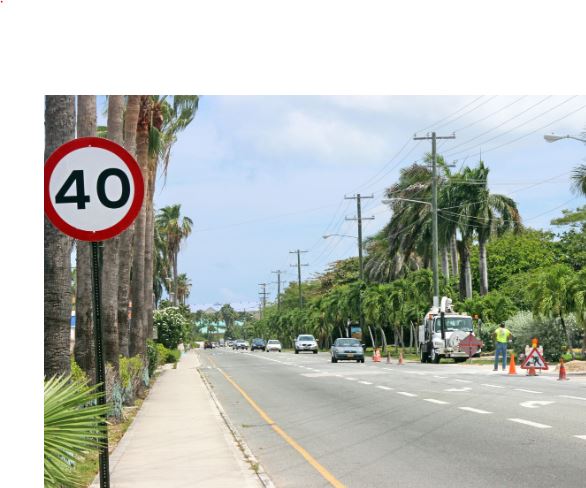
What Attractions Can I see By Car In Grand Cayman:
Grand Cayman, the largest of the Cayman Islands, offers several attractions that can be explored by car. Here are some popular attractions to consider visiting:
Seven Mile Beach: This world-famous beach stretches along the western coast of Grand Cayman. Drive to Seven Mile Beach and enjoy its pristine white sand, turquoise waters, and beachfront resorts. There are also restaurants, water sports activities, and snorkeling opportunities.
Stingray City: Drive to the North Sound area and take a boat tour to Stingray City. You can interact with friendly southern stingrays in shallow waters, feed them, and even snorkel alongside them.
Rum Point: Located on the North Side of the island, Rum Point is a scenic spot known for its tranquil beach and crystal-clear waters. Drive there and relax in hammocks, swim, snorkel, or indulge in local cuisine at the beachside restaurants.
Cayman Turtle Centre: Visit the Cayman Turtle Centre in West Bay, easily accessible by car. Explore the turtle farm and learn about conservation efforts. You can also enjoy swimming in a saltwater lagoon and sliding down the Turtle Twister waterslide.
Pedro St. James National Historic Site: Drive to Savannah and visit Pedro St. James, the birthplace of democracy in the Cayman Islands. This historic site offers a glimpse into Caymanian history, including a restored 18th-century plantation house and beautiful grounds with panoramic views.
Queen Elizabeth II Botanic Park: Take a scenic drive to the Botanic Park located in North Side. Explore the beautifully landscaped gardens, see native flora and fauna, and spot the endangered Grand Cayman blue iguana.
Hell: Drive to the district of West Bay and visit the unique geological formation called Hell. This natural limestone formation is famous for its black, jagged rock formations. You can even send postcards from the Hell Post Office as a quirky souvenir.
Mastic Trail: For nature enthusiasts, drive to the Mastic Reserve in North Side and hike the Mastic Trail. This unspoiled area features a dense mangrove forest and offers a chance to observe native wildlife and flora.
George Town: Drive to the capital of the Cayman Islands, George Town. Explore the town's bustling waterfront, visit the Cayman Islands National Museum, and indulge in shopping and dining experiences.
Starfish Point: Drive to Starfish Point, a beautiful beach located in the district of North Side. As the name suggests, you can find starfish in the shallow waters. Be mindful not to disturb the delicate marine ecosystem.
Remember to drive on the left-hand side of the road in the Cayman Islands, as it follows British driving conventions. Ensure you have a valid driver's license and obey local traffic laws.
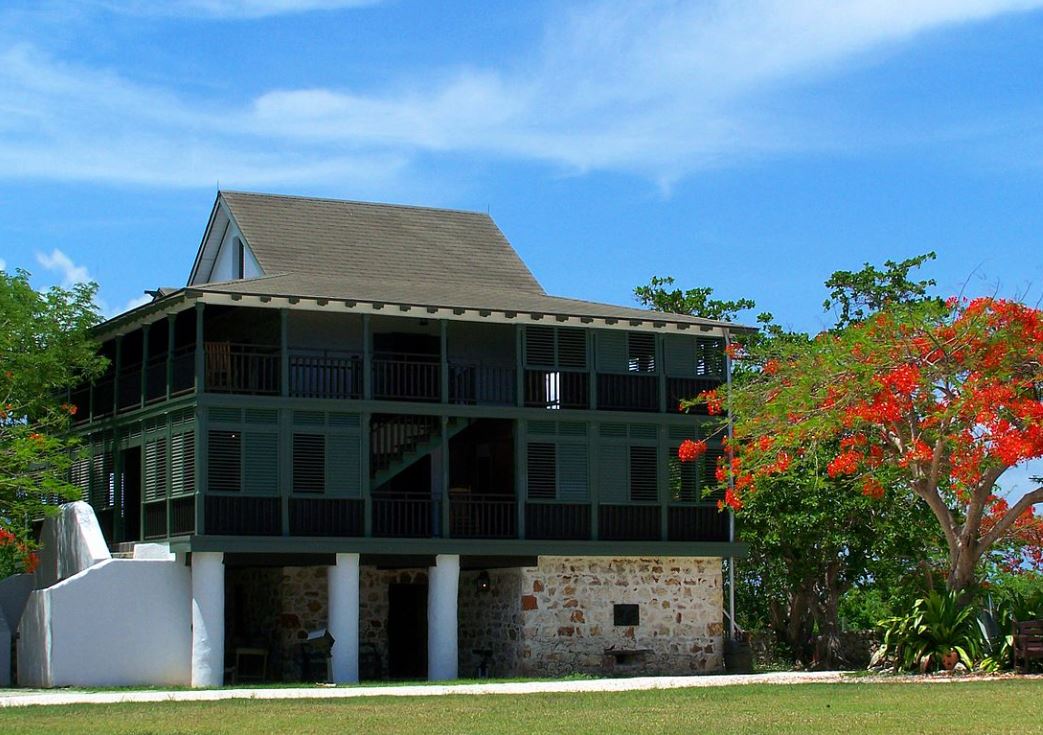
What are the top 10 restaurants I can visit by Car in Grand Cayman:
Grand Cayman is renowned for its vibrant culinary scene, offering a wide range of dining options. Here are ten popular restaurants you can visit by car in Grand Cayman:
1. Blue by Eric Ripert: Located in the Ritz-Carlton, Blue by Eric Ripert offers an exquisite fine dining experience featuring fresh seafood and innovative flavors. It's located in Seven Mile Beach.
2. Agua Restaurant & Lounge: Situated in the heart of Seven Mile Beach, Agua is known for its Mediterranean and Italian-inspired cuisine. The restaurant offers a stylish ambiance and a diverse menu.
3. The Brasserie: Found in George Town, The Brasserie focuses on farm-to-table dining, utilizing locally sourced ingredients. The menu reflects the flavors of the Cayman Islands with a modern twist.
4. Calypso Grill: Situated in West Bay, Calypso Grill provides a waterfront dining experience with breathtaking views. Their menu offers a fusion of Caribbean and Mediterranean flavors, including fresh seafood.
5. Luca: Located in Seven Mile Beach, Luca offers a contemporary Italian menu with an emphasis on fresh ingredients and flavors. The restaurant provides a sophisticated atmosphere with ocean views.
6. Tukka: Found in East End, Tukka is a unique restaurant specializing in "Australian-Caribbean" cuisine. Enjoy a fusion of flavors, including kangaroo, local seafood, and other eclectic dishes.
7. Morgan's Seafood Restaurant: Situated in George Town, Morgan's Seafood Restaurant offers a waterfront dining experience with a focus on fresh seafood. Their menu showcases Caribbean flavors and international influences.
8. Rackam's Waterfront Bar and Grill: Located in George Town, Rackam's offers casual waterfront dining with stunning ocean views. The menu features a variety of seafood, burgers, and Caribbean-inspired dishes.
9. Catch: Situated in West Bay, Catch is a seafood-centric restaurant known for its ocean-to-table concept. Enjoy fresh catches and a vibrant atmosphere with live music and ocean views.
10. The Lighthouse: Found in Breakers, The Lighthouse offers panoramic views of the Caribbean Sea. The menu highlights international cuisine, including seafood, steaks, and vegetarian options.
Please note that availability, operating hours, and menu offerings may vary, so it's advisable to check the restaurant's website or make reservations in advance. Additionally, consider any COVID-19 restrictions or guidelines that may affect restaurant operations during your visit.

Final Note-Here Are Your Top Driving Tips When Driving a Rental Car in Grand Cayman, Cayman Islands:
Driving in Grand Cayman, Cayman Islands can be a pleasant experience, with well-maintained roads and beautiful scenery. To ensure a safe and enjoyable trip, here are the top driving tips for rental car driving in Grand Cayman:
Drive on the left: Like many other British Overseas Territories, the Cayman Islands drive on the left side of the road. Take some time to familiarize yourself with this if you are not accustomed to it.
Choose a reputable rental car company: Select a well-known and reputable rental car company to ensure you get a reliable and well-maintained vehicle. We choose Budget Rent a Car or Apex Car Rentals because of their reputation and being in business since 1979 in Grand Cayman.
Observe speed limits: Adhere to the posted speed limits, which are typically 40 mph (64 km/h) in built-up areas and 50 mph (80 km/h) on open roads. Slow down in residential areas or near schools where speed limits may be lower.
Use headlights at night: It is mandatory to use headlights when driving at night in the Cayman Islands. Ensure your rental car's headlights are in good working condition before setting off.
Watch out for wildlife: Be cautious of wildlife, such as iguanas and chickens, which are commonly seen on the roads. Slow down and give them space to cross safely.
Be mindful of roundabouts: Grand Cayman has several roundabouts, so familiarize yourself with how they work. Yield to traffic already on the roundabout and enter when it is safe to do so.
Avoid distracted driving: As with any location, avoid distractions while driving, such as using your phone or eating. Keep your focus on the road to ensure your safety and the safety of others.
Secure your belongings: When parking your rental car, do not leave any valuable items visible inside. Either take them with you or lock them in the trunk to deter theft.
Be courteous to other drivers: Practice courtesy and patience while driving. Letting others merge or giving a friendly wave can go a long way in creating a positive driving experience.
By following these driving tips, you can have a safe and enjoyable time exploring the beautiful Grand Cayman Island in your rental car. Remember to always prioritize safety and respect the local driving laws and customs.

Disclaimer: The information provided on this page is based on general knowledge and research up until July 2023. While efforts have been made to ensure the accuracy and reliability of the information, it is subject to change and may not reflect the most current updates or local regulations. Therefore, it is always advisable to verify the information with official sources or consult local authorities before making any decisions or taking actions based on the information provided. The user is solely responsible for using the information on this page at their own discretion.